A Look Into German Shepherd Colors

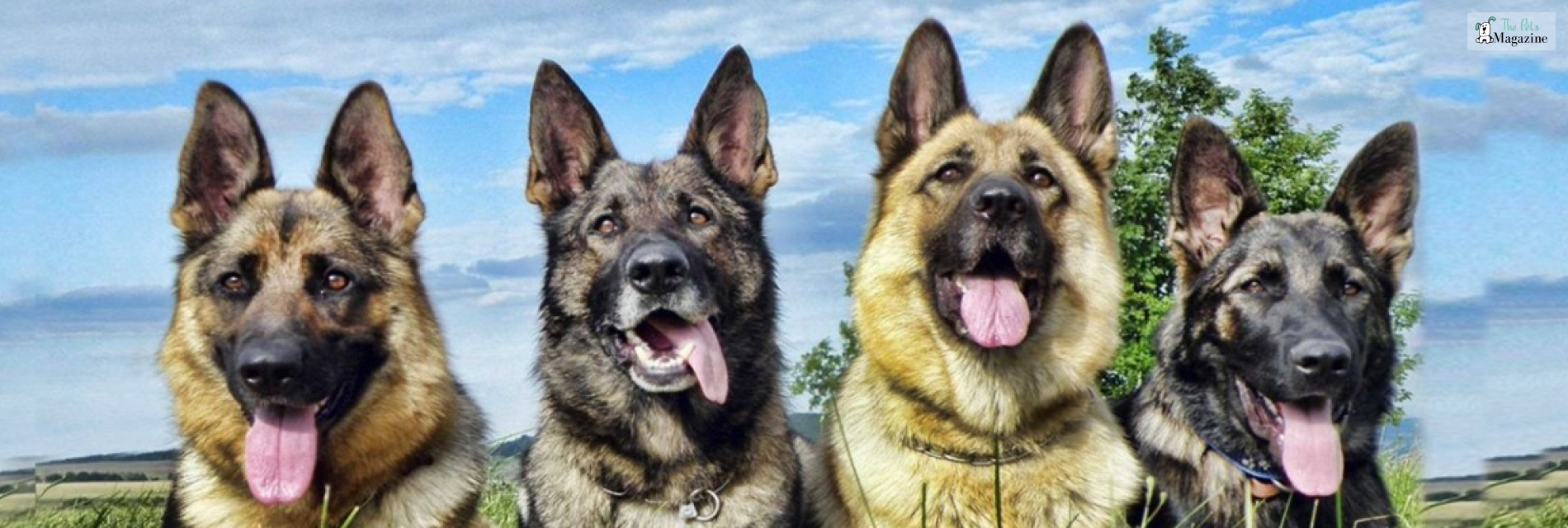
If you are looking for a loyal and faithful companion who will also serve as a watchful protector of your home, then you need to bring home a German Shepherd. The German Shepherd Dog’s birthplace is Germany. German Captain Max von Stephanitz created them in the 1800s.
He bred dogs with desirable traits like intelligence, loyalty, and athleticism to create the ideal herding dog. While initially German Shepherd dogs used to herd sheep, the breed quickly rose in popularity as police dogs, guide dogs, and search & rescue dogs. German Shepherds also make great family pets.
German Shepherds are large dogs who weigh around 50-90 pounds, they are also high-energy dogs who need a lot of exercise and playtime. GSDs also have short to medium length coat and comes in a variety of colors, from black and tan to completely white. Read on to learn more about German Shepherd colors.
German Shepherd Colors from the most popular to most rare
In addition to intelligence and traits like loyalty and courageousness, German Shepherds are known for striking looks. The color of their coat is one of the major factors that contribute to their looks. According to AKC, there are 11 standard German Shepherd colors.
In this section, we have ranked some of these standard colors according to the most commonly available to the rare coat colors of German shepherds.
Black and Tan German Shepherd
Black and tan is the most common German shepherd color. Kennel clubs around the world distinctively associate the black and coat color with the German Shepherd. Out of all the German Shepherds registered with the American Kennel Club (AKC), 63% of GSDs sport black and tan coat color.
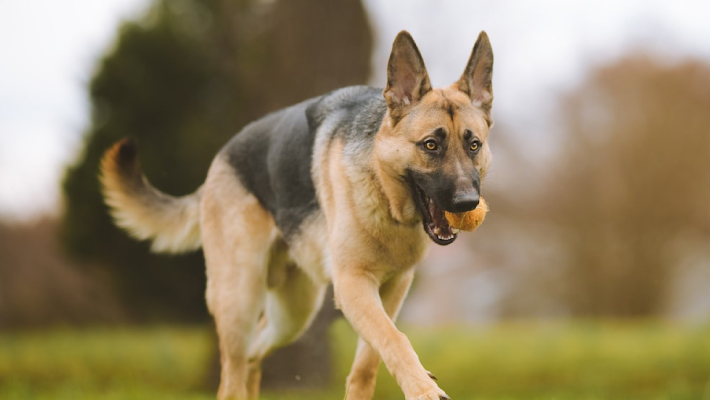
Horand Von Grafrath was the name of the first German shepherd dog. The breed was officially registered in Germany in 1899. It sported a black and tan colored coat. But compared to the modern black and tan German Shepherd, Horand’s coat was slightly darker.
His face and back were black with a rich tan undercarriage. Since all modern German shepherds have directly descended from Horand, this can be one of the reasons why black and tan is the most prevalent German shepherd coat color.
Generally, German shepherds with black and tan coat colors have black on their saddle or back, and some dogs also have it on their faces. The tan coloring appears on their chest, underbelly, paws, and tips of their tails.
Black and Red German Shepherd
The second most common German Shepherd coat color is black and red. Around 14% of all the German Shepherd dogs registered with the AKC flaunt black and red coat colors.
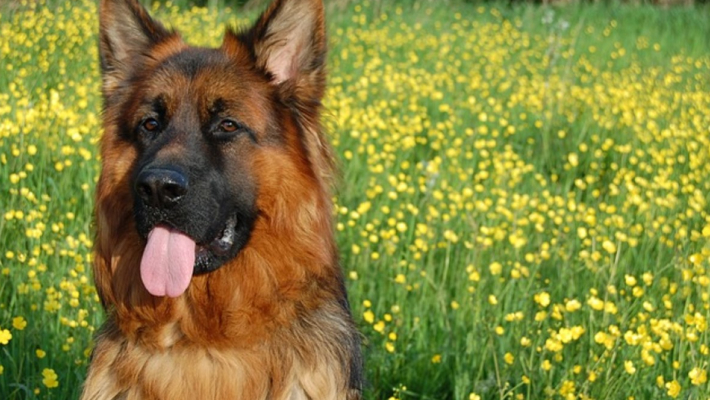
The rich red pigment seen in German Shepherds with black and red coat colors is a result of the color gene pheomelanin. However, not all German Shepherds have rich red color markings on their coats. The color can vary from rich mahogany red to a light strawberry blonde.
Similar to what is seen on German shepherds with black and tan coat colors, German shepherds with black and red coats also have the black color on their backs and on their faces like a mask. The red-colored markings are present on their underbelly, chest, ears, around the muzzle area, front and back legs, and bottom.
Black and Cream German Shepherd
As per AKC, black and cream is a standard German shepherd color, but this color is not as commonly seen as Black and Tan or Black and red. However, this is not a rare color variation. The cream color seen on these dogs is also not a true cream but a very light tan color.
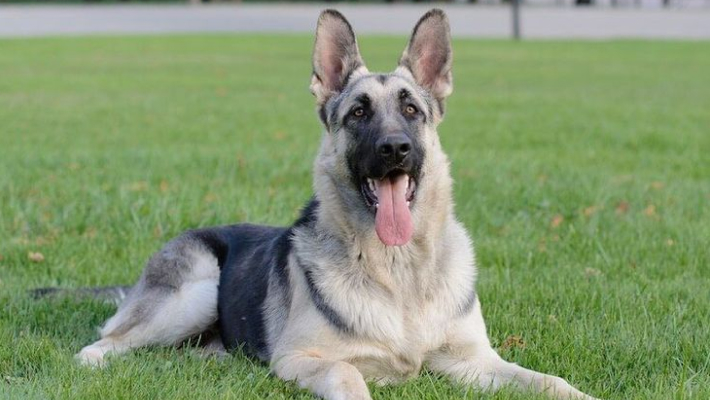
If one observes a black and cream German Shepherd closely, then one may notice a hint of yellow within the cream-colored markings. GSDs with black and cream-colored coats have black colored markings on their back and cream-colored markings on their underbelly and chest area.
Black and Silver German Shepherd
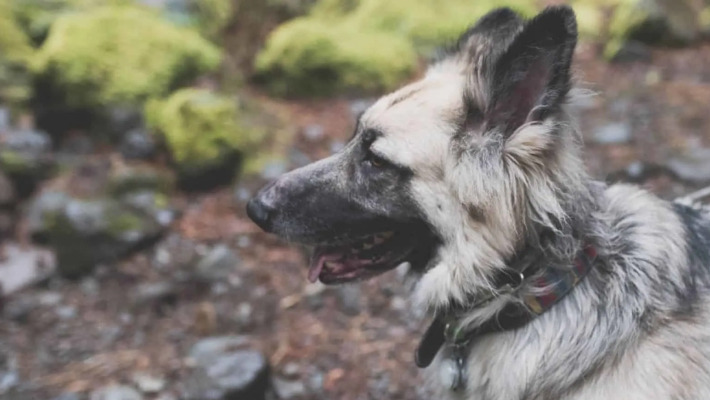
German Shepherds with black and silver coat colors can look like it is a rare variation or crossbreed. But the black and silver German Shepherd color is actually a standard one, as per AKC. The gene responsible for the silver coloration is a recessive one. Hence, German Shepherds with black and silver coats only occur when two dogs carrying the silver genes are bred with each other. The silver-colored coat can vary from silvery white to different shades of grey to a deep charcoal color.
Sable Color German Shepherd
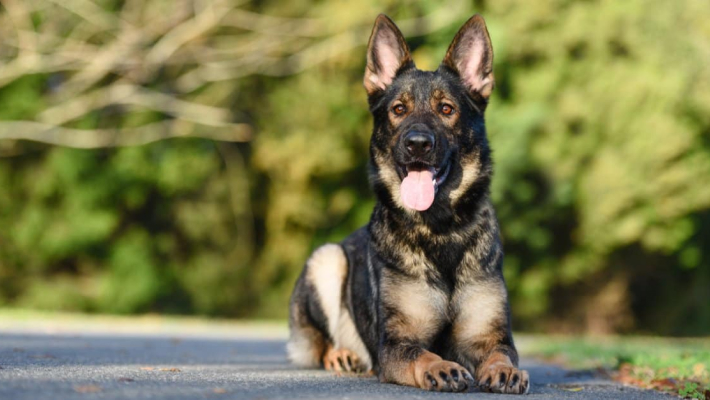
Sable color refers to a rich, warm brown that looks almost like black but is actually a combination of several different colors. This includes a combination of colors such as tan, red, gold, grey, and silver. In the case of the German Shepherd, the coat color is generally a combination of red/brown or gray with a black tip. There are also no apparent or distinct areas of coloring or marking.
Bi-Color German Shepherd
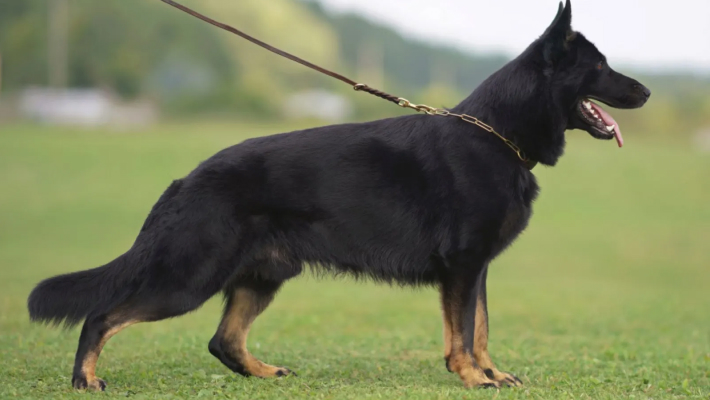
There is a lot of controversy and debate surrounding the issue of the Bi-color coat color of German Shepherd. This is because German Shepherds with Bi-color coat color have predominantly black coat color with small bits of tan markings. The tan marking can be seen on their legs, chest, and, in some cases, eyebrows. Hence, GSD experts and enthusiasts sometimes question whether the bi-color should be a coat color of its own right or considered a variation of black and tan marking.
Panda Color German Shepherd
Panda is one of the rarest German Shepherd color variations out there. German Shepherds born with a panda coat color are a result of a rare genetic mutation. But contrary to the general belief, the unique panda coat color is not a result of any crossbreeding.
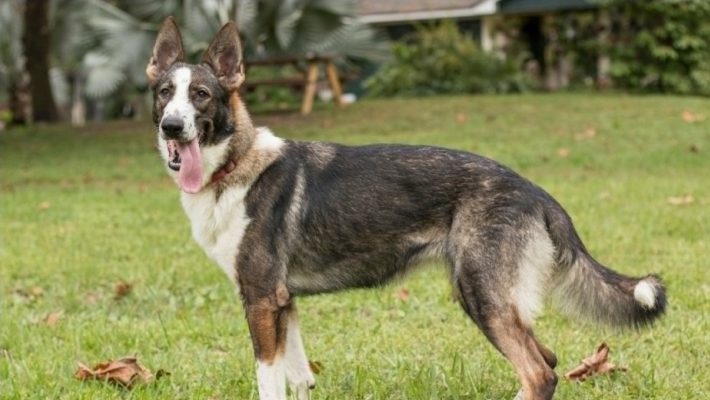
However, German Shepherds with panda color are purebred and come from working line GSDs. The father sports black and tan color, and the mother is a solid black German Shepherd.
German Shepherds with panda coat color have 35-40% white fur coloring on their body. The remainder of the fur coloring is the usual black and tan coloring. The percentage of white fur coloring can vary for each dog. The tip of the tail, chest, forehead, muzzle, and collar contains white color fur. Because of the different color patterns, the panda coat is sometimes known as a piebald coat. It should be noted that AKC does not accept this as a standard coat color in German Shepherds.
How to take care of your German Shepherd’s coat
Hopefully, by now, you have a fair idea of the many different German Shepherd colors that are out there. But along with coat colors, you also need to know how to groom them to properly maintain the coat. These majestic dogs have a double coat, which is short to medium in length. The coat sheds year-round. As a result, German Shepherds require weekly brushing to minimize shedding and prevent matting.
Their coat doesn’t need a lot of cleaning. So you do not need to give them a bath frequently. Give them a bath if they are starting to smell or have become dirty after playing outside. Make sure to use a high-quality shampoo and conditioner that doesn’t dry out their coat. You can also take recommendations from your vet or visit a professional groomer.
Here are some tips and tricks to keep your German Shepherd’s gorgeous coat shiny and healthy:
Brush Regularly
Brushing is key to managing shedding and keeping your Shepherd’s coat free of mats and tangles. Aim to brush every few days, especially during shedding seasons. Also make sure to use the Right Brush. For best results, use a combination of brushes like the following:
- Slicker brush: Removes loose fur and distributes natural oils.
- Undercoat rake: Reaches deep to remove dead undercoat fur.
- Brushing Technique: Brush in the direction of fur growth, starting from the head and working your way back. Be gentle around the face, ears, and legs.
Bath Wisely
German Shepherds don’t require frequent baths. Mainly because over-bathing can strip their coat of natural oils and irritate their skin. Bathing every 6-8 weeks is usually enough.
- Shampoo Choice: Use a high-quality dog shampoo designed for double coats. Avoid harsh shampoos or human shampoos.
- Drying Thoroughly: After bathing, towel dry your German Shepherd as much as possible. You can then use a dog dryer on a low setting to speed up the drying process.
Additional Tips
- Trimming: Avoid cutting or shaving your German Shepherd’s coat. Their double coat protects them from the elements and regulates their body temperature. Trimming around the paws and sanitary areas is okay, but consult a professional groomer for anything more extensive.
- Regular Checkups: Regular vet checkups can help identify any underlying skin or coat problems early on.
What To Feed Your German Shepherd For A Healthy and Shiny Coat
Here are some things that you should consider feeding your German Shepherd to ensure that they have a healthy and shiny coat:
Essential Fatty Acids
These are crucial for healthy skin and a shiny coat. Look for food containing Omega-3 and Omega-6 fatty acids in the right balance. Fatty fish like salmon, sardines, herring, flaxseed oil, and some plant oils can be good sources.
High-Quality Protein:
Protein is essential for building and maintaining healthy skin and fur. German Shepherds are active dogs, so aim for a diet with at least 18-25% protein content for adults and even more for growing puppies.
Overall Balanced Diet:
A well-balanced diet that meets all your Shepherd’s nutritional needs is crucial. This includes protein, fats, carbohydrates, vitamins, and minerals. But make sure to consult your Vet first. Discuss your dog’s specific needs with your veterinarian and choose a high-quality dog food formulated for German Shepherds. Fish oil or other Omega-3 fatty acid supplements can be beneficial for an extra shine boost.
Wrapping Up
The German Shepherd’s diverse and stunning coat colors are just one aspect of what makes this breed so intriguing. From the classic black and tan to the rarer bi-color and sable variations, each coat reflects a unique genetic makeup. Understanding these variations can not only help you appreciate the beauty of the breed but also guide you in choosing the right German Shepherd for your preferences.
Remember, regardless of color, the temperament, trainability, and loyalty of the German Shepherd are what truly define this breed. So, if you’re looking for a courageous, intelligent, and loving canine companion, a German Shepherd – no matter its color variation – could be the perfect fit for you.
You May Also Like..





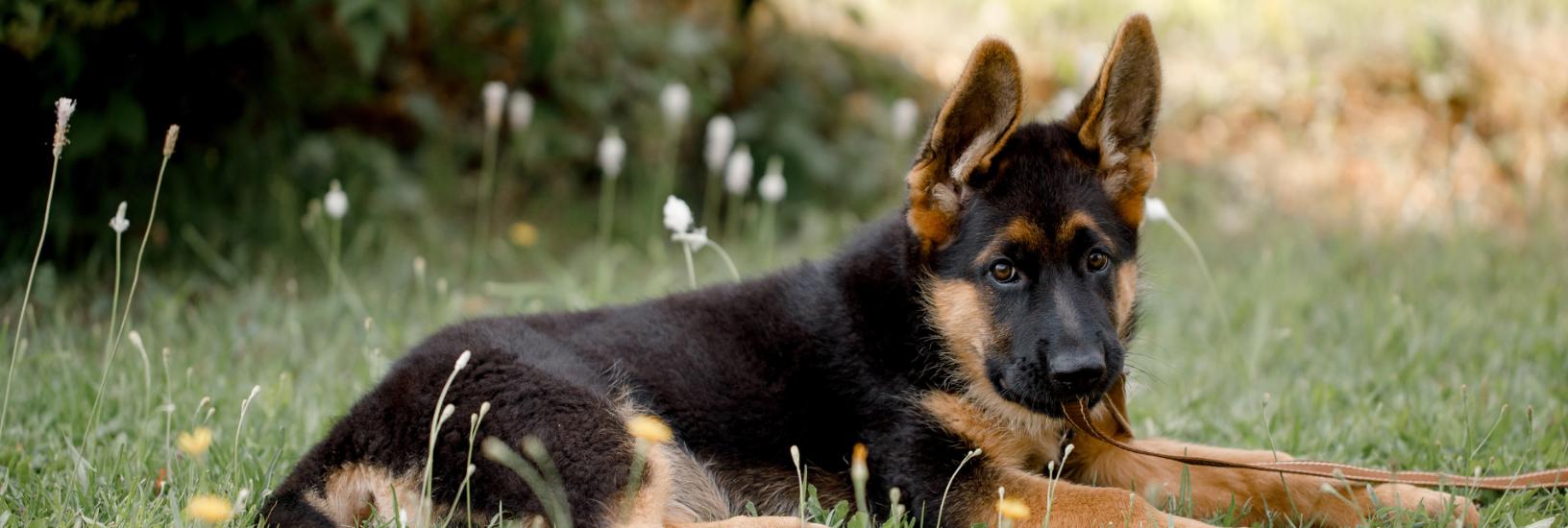
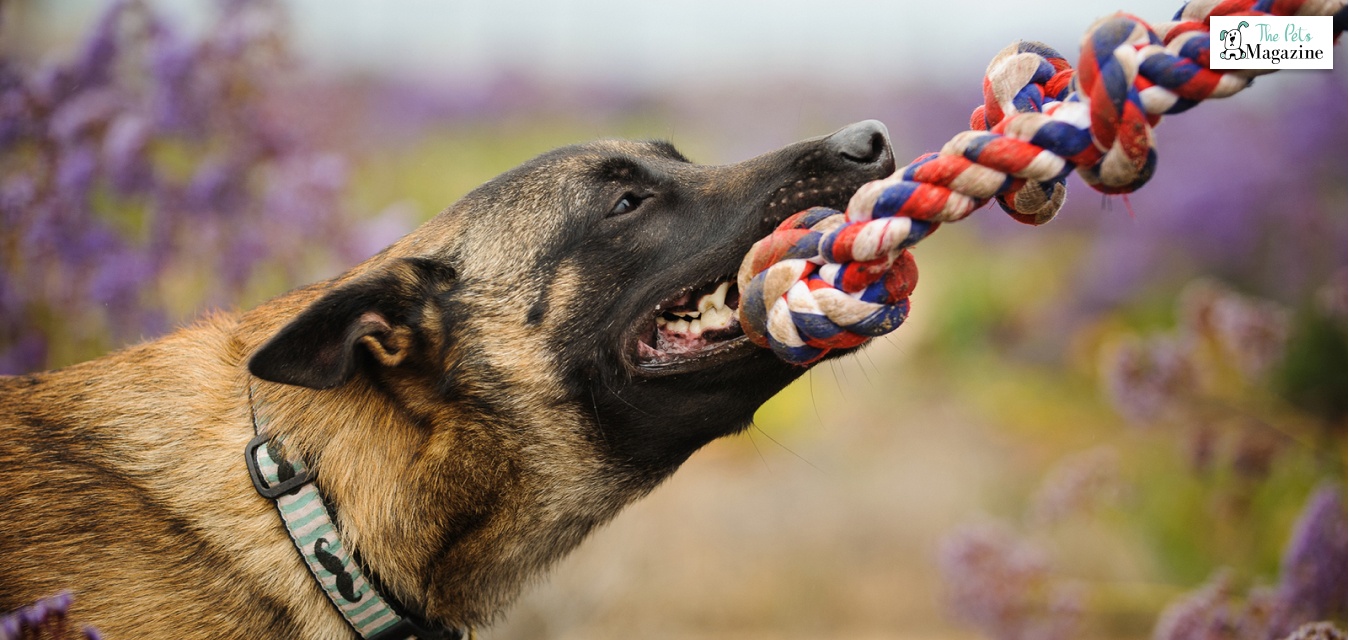
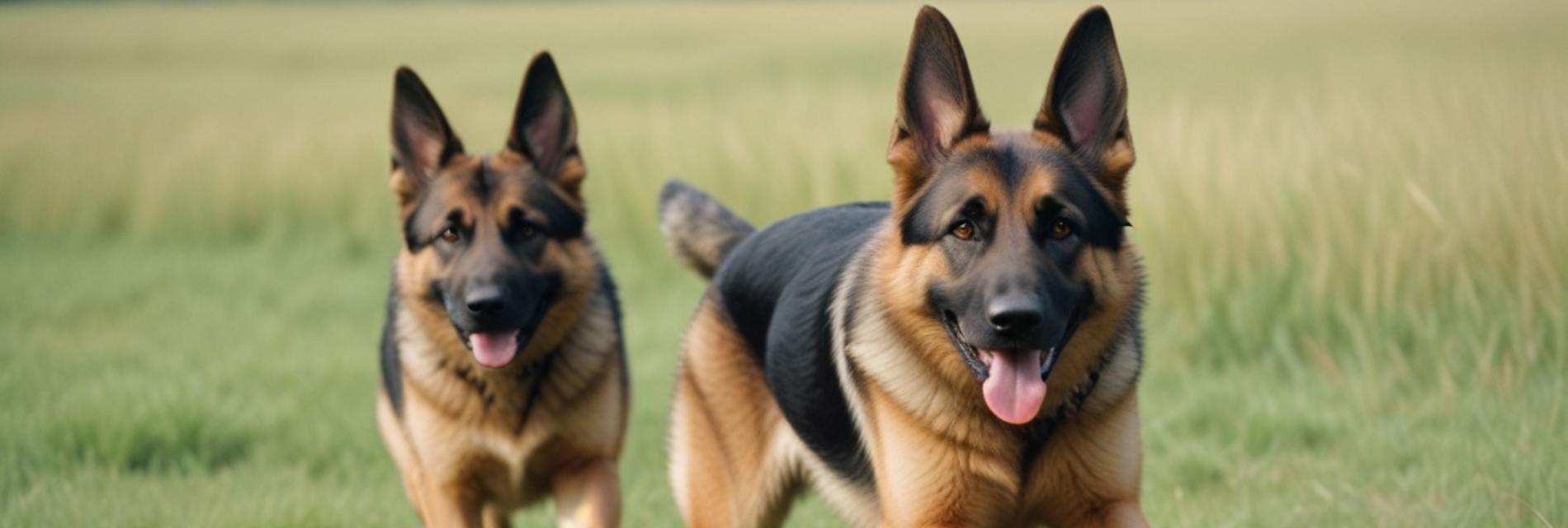
Leave A Comment